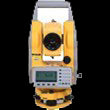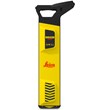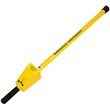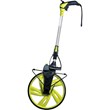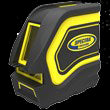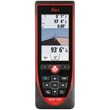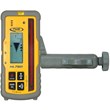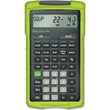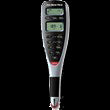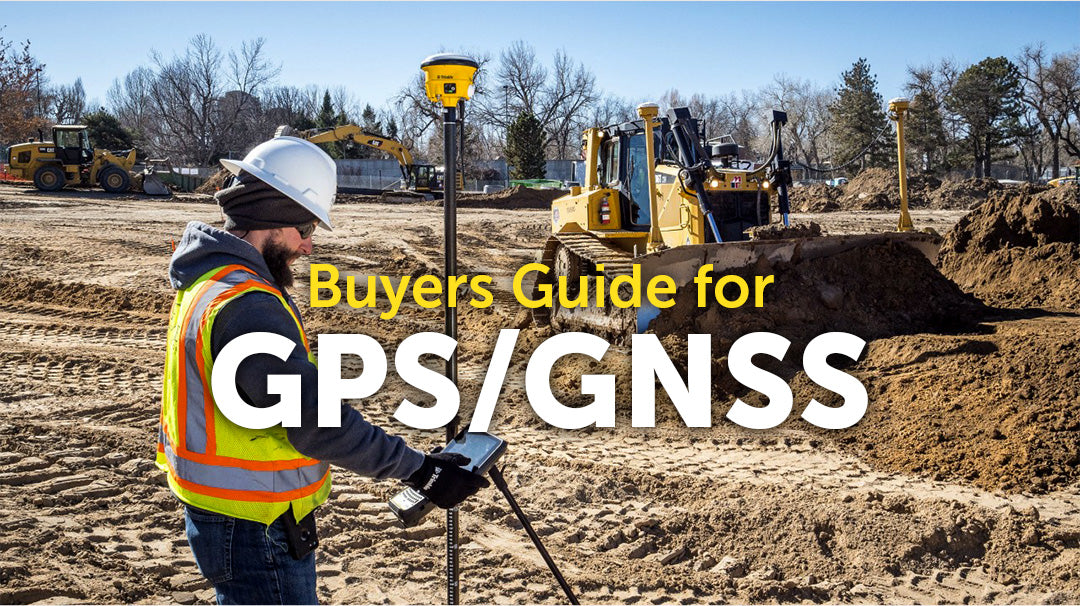
Buyers Guide To GNSS & GPS Systems
For some, it’s a little weird to think how satellites hovering outside the Earth can tell where Bob’s house is in a remote suburban area. The GPS/GNSS technology revolutionized the way we live and the things we can do. Industries like automobiles, air navigation, surveying, agriculture, forestry, construction, and a whole lot more owe much of their advancements to this technology. In this buyer’s guide, we will help you understand what GNSS and GPS are and what you should look for in a GNSS receiver.
GNSS vs GPS: What’s the Difference?

The terms GPS and GNSS are often carelessly interchanged, causing confusion among users. GNSS, which stands for Global Navigation Satellite System, is the umbrella term for all global satellite navigation (satnav) systems that provide precise location positioning anywhere on Earth. These satnav systems include GPS, Galileo, GLONASS, and Beidou.
The Global Positioning System (GPS), on the other hand, is just one component of GNSS. Originally developed by the United States Department of Defense for military use, it was made accessible to the public in 1994. It now has up to 32 medium Earth orbit satellites and is the most used GNSS in the world.
GPS vs. GNSS Receivers: Which is Better?

GNSS basically has three segments: the space segment, the control segment, and the user segment. The space segment is the satellites that send signals to Earth, and the control segments are the Earth-based stations that monitor and correct the time and orbit parameters of the satellites as they drift a little bit.
The user segment is devices used by end-users to receive and process signals from the GNSS satellites. This can range from smartphones to more high-end specialized GNSS receivers for more advanced applications.
Choosing the right receiver is the focus of this buyer’s guide. But first, let’s settle how GPS and GNSS receivers differ and which one fits your application.
As opposed to GPS receivers that have access to only the GPS, GNSS receivers have access to multiple satellite systems. Now you might be wondering, so what? If one satellite system fails or the line of sight is obstructed, GNSS receivers can still pick up signals from other systems. This kind of dependability is crucial when working on the field.
Not all GPS receivers are compatible with GNSS, but all GNSS receivers are compatible with GPS. This makes GNSS receivers the logical choice if you need highly accurate, reliable positioning no matter where you go.
What to Look for in GNSS Receivers
When selecting a GNSS receiver, keep in mind that there will almost always be some form of a tradeoff between four things: accuracy, availability, first fix time, and reliability. Technology hasn’t yet reached the point where you can have it all without compromise, so you have to decide which aspects are most important to your specific use.

1. Accuracy
Accuracy is obviously a top priority when choosing a GPS/GNSS receiver, but the actual level of accuracy you need depends on your application. Surveying or mapping requires centimeter-level accuracy. For other applications such as hiking, meter-level accuracy may suffice. Although GNSS satellites are highly accurate, several factors reduce this accuracy. First, the satellite clock may drift off by a few nanoseconds, causing huge errors in position. Other causes of GNSS errors are orbit errors, ionospheric and tropospheric delays, and the multipath effect. Various brands and models use different technologies to ensure maximum accuracy fit for the target application.
These technologies include the following:
- Multi-frequency: GNSS satellites send more than one band of frequencies which encounter varying kinds of interference in the atmosphere. For example, GPS has L1, L2, and L5 bands. A single-frequency receiver detects only the L1 band without a way to compensate for errors should this frequency be interfered. A dual- or multi-frequency GNSS receiver, on the other hand, can detect more than one band, so that when the L1 band is interfered, the receiver will still maintain accuracy and availability through the L2 and/or L5 band.
- Multi-constellation: This is the ability of a receiver to detect different GNSS systems like GPS, Galileo, GLONASS, and Beidou. Like we’ve said before, the more GNSS systems the receiver can work with, the better.
- Real-Time Kinematic (RTK): RTK is a technique that uses carrier-based ranging that is more precise than code-based positioning. RTK produces centimeter-level positioning while code-based positioning produces meter-level positions. In the most basic sense, the range is calculated by multiplying the carrier wavelength to the number of carrier cycles between the satellite and the rover station. To eliminate errors, measurements are also transmitted from a base station to the rover station.
- Precise Point Positioning (PPP): PPP is also a carrier-based technique that relies on correcting satellite clock and orbit errors using a network of global reference stations. The corrections are then transmitted to the end-user via satellite or the Internet. These corrections result in decimeter-level or even more accurate positioning with no need for a base station.
- Antenna quality: Signals from satellites are very, very weak by the time they reach the ground. The quality of a receiver’s antenna will affect how well it picks up signals at low decibel levels. High-quality antennas can detect signals as low as -155 dBm and even levels approaching -165 dBm.
- Number of tracking channels: Accuracy is improved when four or more satellites are used to determine a location. The more tracking channels a receiver has for following many satellites at once, the better.

2. Availability
Some applications require GNSS receivers to continue providing accurate positioning service even in areas where satellite signals are blocked or interfered such as under dense canopy or near tall buildings. If you’re required to work in such areas, it’s best to purchase a multi-frequency, multi-constellation receiver. You also must make sure that it has some way to mitigate the multipath effect.
Another technology that you might find useful if you need constant availability is a piece of equipment that integrates GNSS and INS. INS, which stands for Inertial Navigation System, is a technology used to compute position through acceleration and angular velocity measurements. We won’t go into too much detail about how it works, but GNSS+INS is a powerful combination that ensures continuous availability of position and navigation. When the GNSS conditions are good, the GNSS receiver continues providing accurate position and time, but when the GNSS conditions suffer, the INS takes over and provides position and navigation until the GNSS conditions improve.

3. “First Fix” Time
The time it takes for a receiver to provide a position is usually called the “fix”. Some applications require a fast first fix time while some do not. Some GNSS receivers have a fix time as fast as 11 seconds, like the Spectra Precision’s SP90m GNSS Receiver. GNSS receivers with multiple simultaneous channels also reduce the time it takes to get an initial fix. It’s important to note, however, that a fast fix time often increases the probability of a wrong position.

4. Reliability
Another crucial factor you need to consider is the reliability of the GNSS receiver. Do you need an accurate position and time every time? Different brands have different technologies to ensure reliability. For example, Spectra Geospatial has the Z-Blade positioning technology which, unlike most other brands, does not prefer GPS over other systems. No minimum number of GPS satellites is required to establish a connection, resulting in better reliability.
Other Factors to Consider When Choosing a GNSS Receiver
- Environmental protection. If you commonly work in hazardous areas with wildly varying temperatures and extreme climate conditions, you need a unit that withstands water submersion, torrential rain, and dust. It should also be able to handle shock and vibration well.
- User-friendly interface. It’s also important to consider how easy it will be for you to use the device. You need to consider everything involved in operating the device – the screen, keypad, and connectors to other devices.
- Memory and storage. Some applications require working with and storing large amounts of data. Not only do you need a large memory capacity for real-time operation, but you also need more storage rooms for storing time-stamped range for post-mission use.
- Connectivity. You also need to consider the ideal and required ways for you to transfer data to another device. Some units allow you to communicate real-time to a device over a cellular radio link, for example. Other ways to connect to other devices are USB OTG, Bluetooth, WiFi, Ethernet, among others.
- Size and weight. The size and weight affect how portable the unit is. For some applications such as hiking and surveying, portable units are a necessity, so make sure to check if the receiver is lightweight and compact enough for easy transport.
- Operating time. If you’ll be working long hours out in the field, you need a unit with a long-lasting battery.
- Future proof. GNSS is a constantly evolving technology with new signals and constellations that are yet to be available. A future-proof unit is one that assures users that they will be able to use new signals and constellations once available.
Where to Buy GNSS Receivers
GNSS receivers are significant investments that can make or break your project. You need to make sure to only transact with authorized dealers of top brands to get the best value for your money. Buying GNSS receivers online is a quick and hassle-free way to buy a receiver, but again, you must conduct due research before making a purchase.
For a trusted online retailer with hundreds of positive reviews, feel free to browse our full selection of GNSS receivers here. You may also give us a call if you want to speak to one of our experts.

